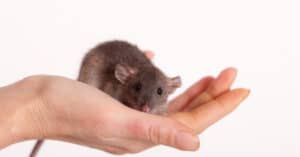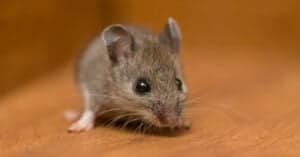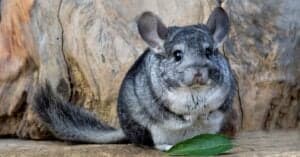Rat vs Hamster: What Are the Differences?
@media (min-width: 481px) {
.mobile-top-content {
display: none;
}
}
#mobileTopContentCTACarouselControls { overflow: hidden; text-overflow: ellipsis; white-space: nowrap; }
.mobile-top-content .more { color: #fff; }
.mobile-top-content a { color: #fff; text-decoration: underline; }
.mobile-top-content a:hover { color: #fff; text-decoration: underline; }
@media (max-width: 480px) {
.mobile-top-content {
background-color: #06a10b;
color: #fff;
text-align: center;
/*height: 60px;
padding-top:5px;*/
font-size:80%;
/* display: block; */
margin: 0px -30px;
}
}
Given the popularity of rodents as pets, you may be wondering what the primary differences are between a rat vs hamster. While both of these creatures enjoy wild and captive lifestyles, there are many things that set them apart from one another. But what might those differences be, and how will these traits affect which rodent you would rather adopt?
In this article, we will compare and contrast all things rat and hamster so that you can learn what makes both of them special. We’ll address their appearances, behaviors, and dietary preferences. Let’s get started and learn about these two rodents now!
Comparing Rat vs Hamster

A-Z-Animals.com
| Rat | Hamster | |
| Size | 6-8 inches long without tail; add 5-7 inches with tail. 3-10 ounces | 2-6 inches long; 3-8 ounces |
| Appearance | Solid colored body in white, black, gray, or brown. Long and hairless tail, long snout and large ears | Found in a variety of colors and patterns including brown, orange, black, gray, lilac, or white. Tiny tail and smaller snout/ears |
| Habitat | Warm and temperate locations throughout the world, always near humanity; enjoys feeling enclosed and safe | Found in only a few places in the wild; enjoys hot climates like deserts and dunes. Can be kept as a pet, so long as their enclosure mimics their burrows |
| Behavior | Shy in the wild but extremely social in captivity; enjoys the company of both other rats and humans | Nocturnal and very active; most hamsters prefer solitary lives and don’t always appreciate being handled by people |
| Diet | Fruit, nuts, seeds, insects, small animals, and eggs | Seeds, nuts, grains, fruits, vegetables, and cracked corn |
Key Differences Between Rat vs Hamster

iStock.com/Liudmila Chernetska
There are many key differences between a rat vs hamster. Hamsters are members of the Cricetidae family, while rats are members of the Muridae family. Rats have extremely long tails, while hamsters do not. Hamsters are found in a wider variety of colors and patterns compared to the relatively plain appearance of a rat. Finally, rats eat more things than hamsters do, depending on their habitat or environment.
Let’s go over these differences in more detail now.
Rat vs Hamster: Size and Weight

KireevI/Shutterstock.com
A primary difference between rats and hamsters is their sizes and weights. While it will depend on both the species of rat and the species of hamster, rats grow larger in both size and weight compared to hamsters. Let’s take a look at this difference in more detail.
The average rat reaches anywhere from 6-8 inches long not including their tails, and the average hamster is 2-6 inches long. Given this size difference, rats weigh an average of 2 ounces more than hamsters, depending on the breed or species. Plus, when you consider that a rat’s tail is 5-7 inches long, this makes rats much longer and larger than hamsters as a whole.
Rat vs Hamster: Enclosure or Habitat Preferences
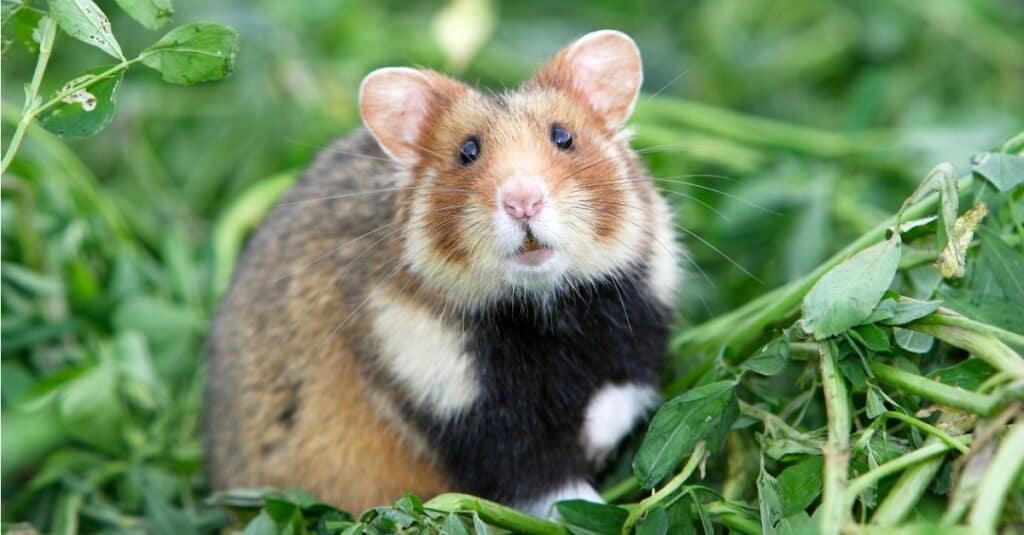
iStock.com/Michel VIARD
Another difference between rats and hamsters is their enclosure or habitat preferences. There are significantly more wild rats than there are wild hamsters, but the two rodents enjoy similarly warm environments when discovered in the wild. However, rats are found worldwide and often near populated areas, while hamsters enjoy deserts and sand dunes more than city streets.
When kept as pets, rats and hamsters enjoy similar enclosures. They also both enjoy having the option to explore the home outside of their enclosure or cage. Hamsters are well known for their love of running on wheels, while rats don’t always share this love. Rats enjoy feeling enclosed and protected, but hamsters are happiest when they have the option to burrow or tunnel, as this mimics their natural environment.
Rat vs Hamster: Appearance

Olena Kurashova/Shutterstock.com
You can tell the difference between a rat and a hamster simply by looking at them. The primary difference in their appearance is their tail. Rats have tails that often grow longer than the length of their bodies, while hamsters have short and stubby tails that you may not notice upon first glance.
Hamsters also come in a variety of colors and markings, while rats are usually one solid color. These colors do overlap however, as hamsters and rats are found in shades of brown, black, gray, and white. The ears on a rat are also slightly larger than the ears of a hamster, though this will depend on the specific breed or species.
Rat vs Hamster: Behavior

iStock.com/Yuliya Taba
There are some key behavioral differences when it comes to comparing a rat vs hamster. For example, hamsters are notoriously nocturnal, while rats are active during the day and night. This is important to consider, especially if you would like to adopt either a rat or a hamster, as hamsters may keep you up at night more often than a rat.
Rats are also very social creatures, while hamsters live primarily solitary lives in the wild and in captivity. Many hamster species or breeds cannot live with other hamsters, but they may still enjoy the company of humans. Rats prefer living with other rats or being regularly handled by their owners, as a lack of socialization may depress them.
Rat vs Hamster: Diet
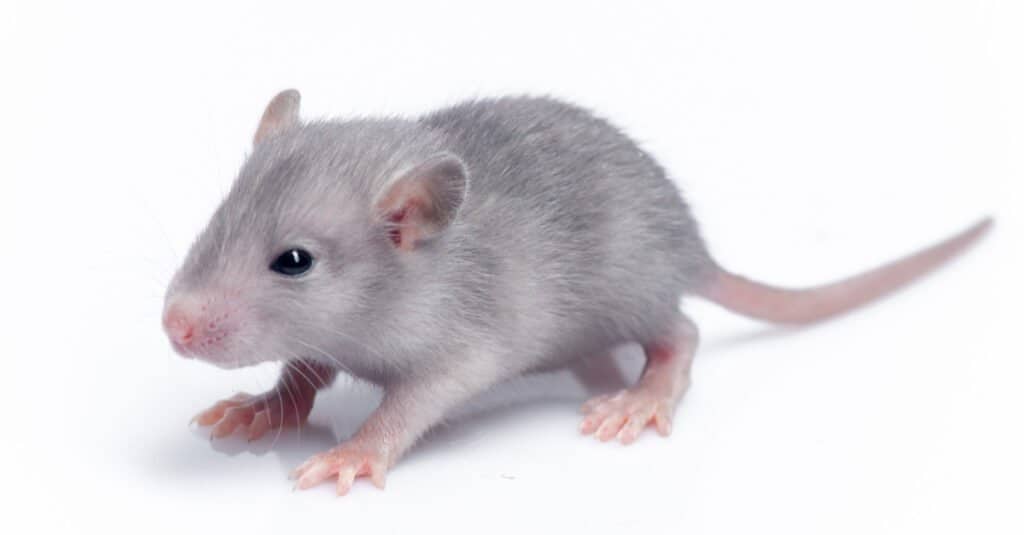
Volodymyr Goinyk/Shutterstock.com
The final difference between rats and hamsters has to do with their diet. Both rats and hamsters eat similar things when kept in captivity, but rats in the wild are more adaptive than wild hamsters overall. For example, rats eat fruit, nuts, seeds, insects, small animals, and eggs, but they also eat trash and human food, while hamsters eat seeds, nuts, grains, fruits, vegetables, and cracked corn.
Rats are also extremely opportunistic eaters and they do not always store their food, while hamsters are notorious food hoarders. They stuff their food into their cheeks and save it to eat at a later time!
More from A-Z Animals
.more-snake-card-image { max-height:140px !important; }
@media (min-width: 481px) {
.mobile-top-content {
display: none;
}
}
#mobileTopContentCTACarouselControls { overflow: hidden; text-overflow: ellipsis; white-space: nowrap; }
.mobile-top-content .more { color: #fff; }
.mobile-top-content a { color: #fff; text-decoration: underline; }
.mobile-top-content a:hover { color: #fff; text-decoration: underline; }
@media (max-width: 480px) {
.mobile-top-content {
background-color: #06a10b;
color: #fff;
text-align: center;
/*height: 60px;
padding-top:5px;*/
font-size:80%;
/* display: block; */
margin: 0px -30px;
}
}
Given the popularity of rodents as pets, you may be wondering what the primary differences are between a rat vs hamster. While both of these creatures enjoy wild and captive lifestyles, there are many things that set them apart from one another. But what might those differences be, and how will these traits affect which rodent you would rather adopt?
In this article, we will compare and contrast all things rat and hamster so that you can learn what makes both of them special. We’ll address their appearances, behaviors, and dietary preferences. Let’s get started and learn about these two rodents now!
Comparing Rat vs Hamster

A-Z-Animals.com
| Rat | Hamster | |
| Size | 6-8 inches long without tail; add 5-7 inches with tail. 3-10 ounces | 2-6 inches long; 3-8 ounces |
| Appearance | Solid colored body in white, black, gray, or brown. Long and hairless tail, long snout and large ears | Found in a variety of colors and patterns including brown, orange, black, gray, lilac, or white. Tiny tail and smaller snout/ears |
| Habitat | Warm and temperate locations throughout the world, always near humanity; enjoys feeling enclosed and safe | Found in only a few places in the wild; enjoys hot climates like deserts and dunes. Can be kept as a pet, so long as their enclosure mimics their burrows |
| Behavior | Shy in the wild but extremely social in captivity; enjoys the company of both other rats and humans | Nocturnal and very active; most hamsters prefer solitary lives and don’t always appreciate being handled by people |
| Diet | Fruit, nuts, seeds, insects, small animals, and eggs | Seeds, nuts, grains, fruits, vegetables, and cracked corn |
Key Differences Between Rat vs Hamster

iStock.com/Liudmila Chernetska
There are many key differences between a rat vs hamster. Hamsters are members of the Cricetidae family, while rats are members of the Muridae family. Rats have extremely long tails, while hamsters do not. Hamsters are found in a wider variety of colors and patterns compared to the relatively plain appearance of a rat. Finally, rats eat more things than hamsters do, depending on their habitat or environment.
Let’s go over these differences in more detail now.
Rat vs Hamster: Size and Weight

KireevI/Shutterstock.com
A primary difference between rats and hamsters is their sizes and weights. While it will depend on both the species of rat and the species of hamster, rats grow larger in both size and weight compared to hamsters. Let’s take a look at this difference in more detail.
The average rat reaches anywhere from 6-8 inches long not including their tails, and the average hamster is 2-6 inches long. Given this size difference, rats weigh an average of 2 ounces more than hamsters, depending on the breed or species. Plus, when you consider that a rat’s tail is 5-7 inches long, this makes rats much longer and larger than hamsters as a whole.
Rat vs Hamster: Enclosure or Habitat Preferences

iStock.com/Michel VIARD
Another difference between rats and hamsters is their enclosure or habitat preferences. There are significantly more wild rats than there are wild hamsters, but the two rodents enjoy similarly warm environments when discovered in the wild. However, rats are found worldwide and often near populated areas, while hamsters enjoy deserts and sand dunes more than city streets.
When kept as pets, rats and hamsters enjoy similar enclosures. They also both enjoy having the option to explore the home outside of their enclosure or cage. Hamsters are well known for their love of running on wheels, while rats don’t always share this love. Rats enjoy feeling enclosed and protected, but hamsters are happiest when they have the option to burrow or tunnel, as this mimics their natural environment.
Rat vs Hamster: Appearance

Olena Kurashova/Shutterstock.com
You can tell the difference between a rat and a hamster simply by looking at them. The primary difference in their appearance is their tail. Rats have tails that often grow longer than the length of their bodies, while hamsters have short and stubby tails that you may not notice upon first glance.
Hamsters also come in a variety of colors and markings, while rats are usually one solid color. These colors do overlap however, as hamsters and rats are found in shades of brown, black, gray, and white. The ears on a rat are also slightly larger than the ears of a hamster, though this will depend on the specific breed or species.
Rat vs Hamster: Behavior

iStock.com/Yuliya Taba
There are some key behavioral differences when it comes to comparing a rat vs hamster. For example, hamsters are notoriously nocturnal, while rats are active during the day and night. This is important to consider, especially if you would like to adopt either a rat or a hamster, as hamsters may keep you up at night more often than a rat.
Rats are also very social creatures, while hamsters live primarily solitary lives in the wild and in captivity. Many hamster species or breeds cannot live with other hamsters, but they may still enjoy the company of humans. Rats prefer living with other rats or being regularly handled by their owners, as a lack of socialization may depress them.
Rat vs Hamster: Diet

Volodymyr Goinyk/Shutterstock.com
The final difference between rats and hamsters has to do with their diet. Both rats and hamsters eat similar things when kept in captivity, but rats in the wild are more adaptive than wild hamsters overall. For example, rats eat fruit, nuts, seeds, insects, small animals, and eggs, but they also eat trash and human food, while hamsters eat seeds, nuts, grains, fruits, vegetables, and cracked corn.
Rats are also extremely opportunistic eaters and they do not always store their food, while hamsters are notorious food hoarders. They stuff their food into their cheeks and save it to eat at a later time!



